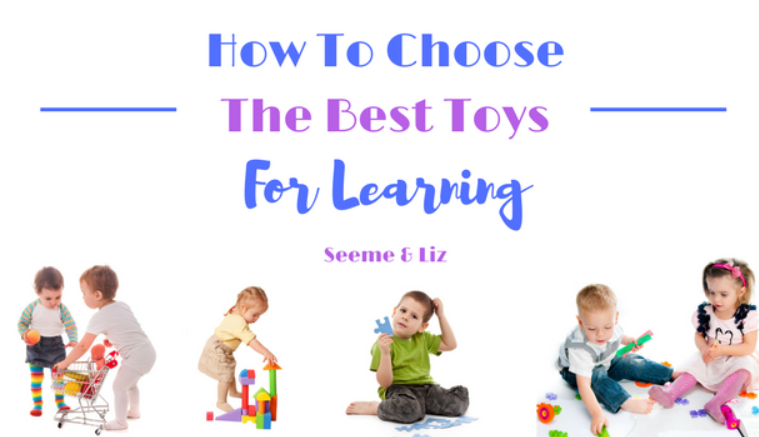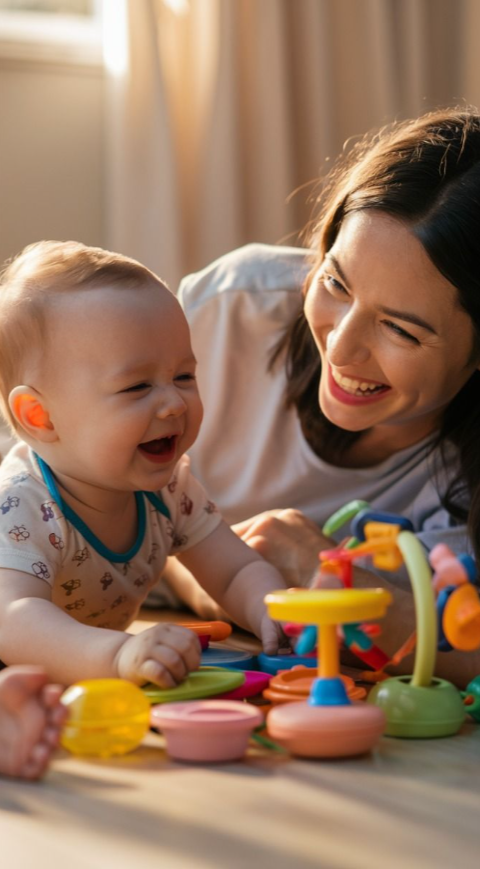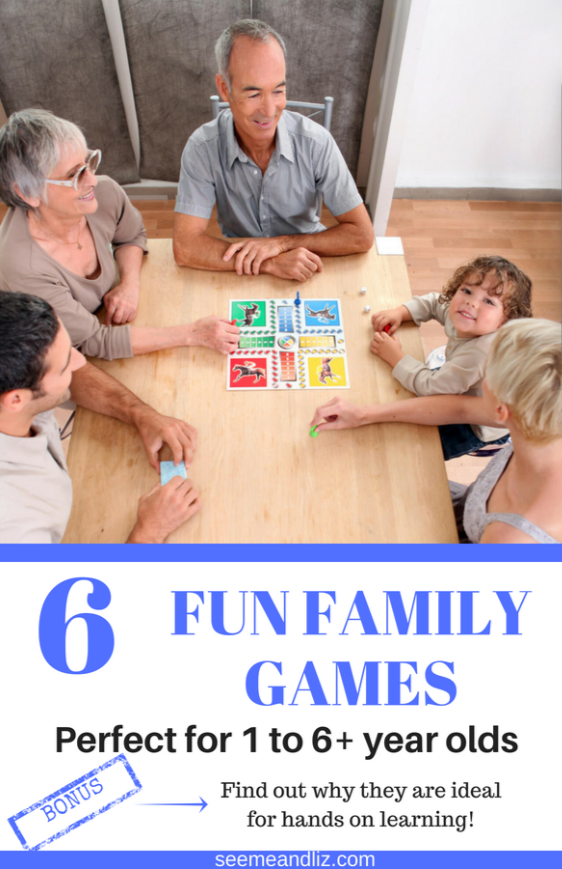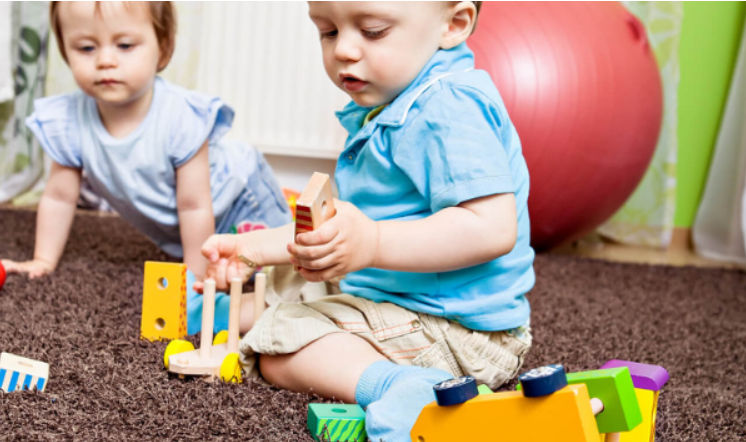With so many toys to choose from these days it really makes it difficult to narrow down the best learning toys for kids. I want to point out that just because a toy is labeled as “educational” or a “learning toy” does not necessarily make it a good toy to purchase for your children.
My goal with Seeme and Liz is to help parents, caregivers and educators find toys that promote language development and learning in general. If a toy for a baby claims to teach colors, numbers, letters and more, I would strongly suggest staying away from it. You can read more about my thoughts on this here. Or, if you do purchase this toy, know that it will not turn your child into a genius.
The toys that I recommend are ones that I have personally used while working as a Speech-Language Pathologist or have in my own home. Or they are toys that colleagues have highly recommended.
How to choose the best learning toys for kids
This guide is meant for toys for children 4 and under. Here are some key points that I look for when choosing toys:
Allow for open ended play
Open ended toys are toys that can be used in a variety of different ways. A child is able to use his imagination and creativity to come up with unique play scenarios each and every time. Some examples of open ended toys are play kitchens, play houses, blocks and dolls, just to name a few.
x
Pop up toys on the other hand would be an example of cause and effect toys. These toys are not open ended as the end result is always the same. For example, you can push a button and something happens; repeatedly pressing the same button results in the same action.
Keep in mind, cause and effect toys should not be discounted. They are necessary for early development and I often recommend them for the 18 month and under age group.
x
Puzzles are an example of a toy which can fall into both categories. There really is only so much you can do with a puzzle at first glance. However, I actually think puzzles are great toys! Yes, the pieces will only fit into certain spots and nothing will change that. But first puzzles (the kind where you place the piece into the matching cutout) are great for teaching vocabulary. You can also use the pieces to tell stories. Puzzles are also great for hand eye coordination and fine motor skills. I could go on and on, but you get the idea.
Can be used to introduce new vocabulary
If the toy can be used in a variety of different ways then you can always find new words to introduce to your child.
Does not claim to teach numbers, letters, shapes, and colors
This is especially true for toys aimed at children who are not yet in school (or at the age where they would be attending school if they are home schooled). These toys teach memorization. A child needs to play independently and with other children and adults in order to learn. You can count with your child, but don’t rely on a toy to do the teaching.
Grows with the child
I like to find toys that my children can have for several years. This way you aren’t spending all of your money buying more and more toys that just end up collecting dust. I try to find toys that can be kept around for at least 2 or more years. Of course, this won’t always be the case but whenever possible try to keep this in mind when looking for toys.
Does not have too many bells and whistles
I prefer simple toys over high tech toys, especially for young children. As I mentioned above, a toy that claims to teach a baby academic skills is too good to be true. And, why exactly would you need your baby to know how to count, read, identify colors, etc? There is plenty of time for that. Let your baby be a baby!
It’s something the child is interested in
This is important if you want the toy to get used. If you know your child loves to build, then find toys that will promote building. If your child enjoys playing house and cooking, then find toys where this skill can be enhanced. If you aren’t sure what your child may like, give a variety of toys a try. My son loves pushing his superhero figurines around in a stroller!
Price does not dictate the quality of a toy
Simply because a toy costs a lot does not necessarily mean that it is better than a less expensive toy. A toy may cost more because of the brand it is. Or it may be made of higher quality materials such as wood and/or eco friendly paint. Plastic toys tend to have a lower price point. If you aren’t concerned with the brand name or materials used then you can find many excellent toys to fit your budget. The toys that I recommend will have varying price points.
The best learning toys for kids can be found at Seeme and Liz!
Again, just to reiterate, when I discuss learning toys I am not referring to toys that will help with academic skills specifically. This is why I am not referring to these toys as “educational”.
The push for focusing on academic skills in young children is proving to be detrimental in the long run. For more information please read Why There’s More To Learning Than ABC’s and 123’s.
To find toys in your child’s age range, hover your mouse over the “play based toy recommendations” tab and you will see a drop down menu with different age groups. Select the age group that your child fits into and you will find articles/reviews on various different toys and why I am recommending them.
Along with each recommendation, I will also provide suggestions for how you can interact with your child in order to promote language development and learning.
From time to time I may review/discuss a new toy that is gaining in popularity. I will share my thoughts on this toy and whether or not I think it is a good toy from a language development and learning perspective.
If you have any suggestions for toys that you feel I should include on this site, please let me know.
Note: When you purchase a toy that I recommend through one of my links, I will receive a small commission from the manufacturer. This allows me to continue to work on this site so I can share my knowledge with other parents! And, it means I don’t have to work outside of my house and can be there for my kids! So thank you for supporting me!




